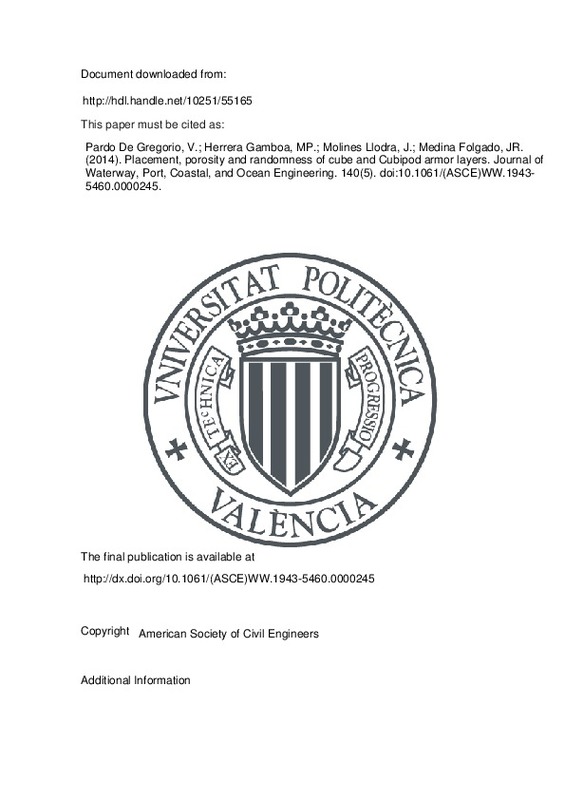JavaScript is disabled for your browser. Some features of this site may not work without it.
Buscar en RiuNet
Listar
Mi cuenta
Estadísticas
Ayuda RiuNet
Admin. UPV
Placement, porosity and randomness of cube and Cubipod armor layers
Mostrar el registro completo del ítem
Pardo De Gregorio, V.; Herrera Gamboa, MP.; Molines Llodra, J.; Medina Folgado, JR. (2014). Placement, porosity and randomness of cube and Cubipod armor layers. Journal of Waterway, Port, Coastal, and Ocean Engineering. 140(5). doi:10.1061/(ASCE)WW.1943-5460.0000245
Por favor, use este identificador para citar o enlazar este ítem: http://hdl.handle.net/10251/55165
Ficheros en el ítem
Metadatos del ítem
| Título: | Placement, porosity and randomness of cube and Cubipod armor layers | |
| Autor: | Pardo de Gregorio, Vicente Herrera Gamboa, María Piedad | |
| Entidad UPV: |
|
|
| Fecha difusión: |
|
|
| Resumen: |
Although little attention is usually given to the armor porosity and armor randomness of randomly placed concrete armor units in mound breakwaters, significant model effects may occur if armor porosity and randomness are ...[+]
|
|
| Palabras clave: |
|
|
| Derechos de uso: | Reserva de todos los derechos | |
| Fuente: |
|
|
| DOI: |
|
|
| Editorial: |
|
|
| Versión del editor: | http://dx.doi.org/10.1061/(ASCE)WW.1943-5460.0000245 | |
| Agradecimientos: |
The authors would like to acknowledge the financial support received from the CDTI (CUBIPOD and CLIOMAR Projects), SATO-OHL Group (CLIOMAR Project), and the Spanish Ministry of Economy and Competitiveness (Grant BIA2012-33967). ...[+]
|
|
| Tipo: |
|







![[Cerrado]](/themes/UPV/images/candado.png)


